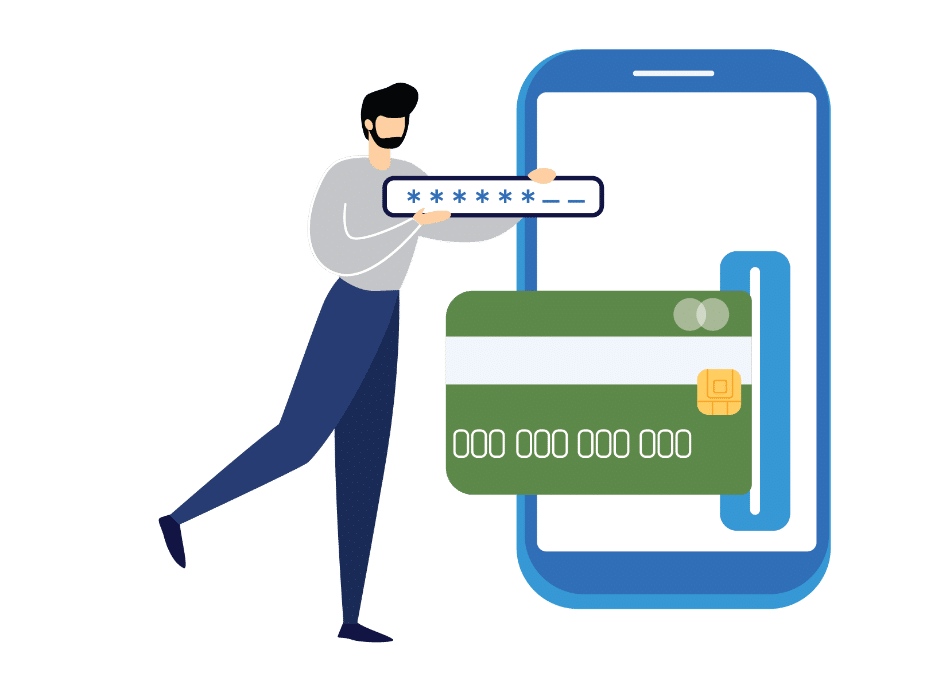Trustcommerce & Health iPASS
Health iPASS Gets
Your Practice Paid
Offer A Better Patient Payment Experience
Deliver the best patient payment services experience with Health iPASS, the market-leading patient intake and digital patient engagement software.
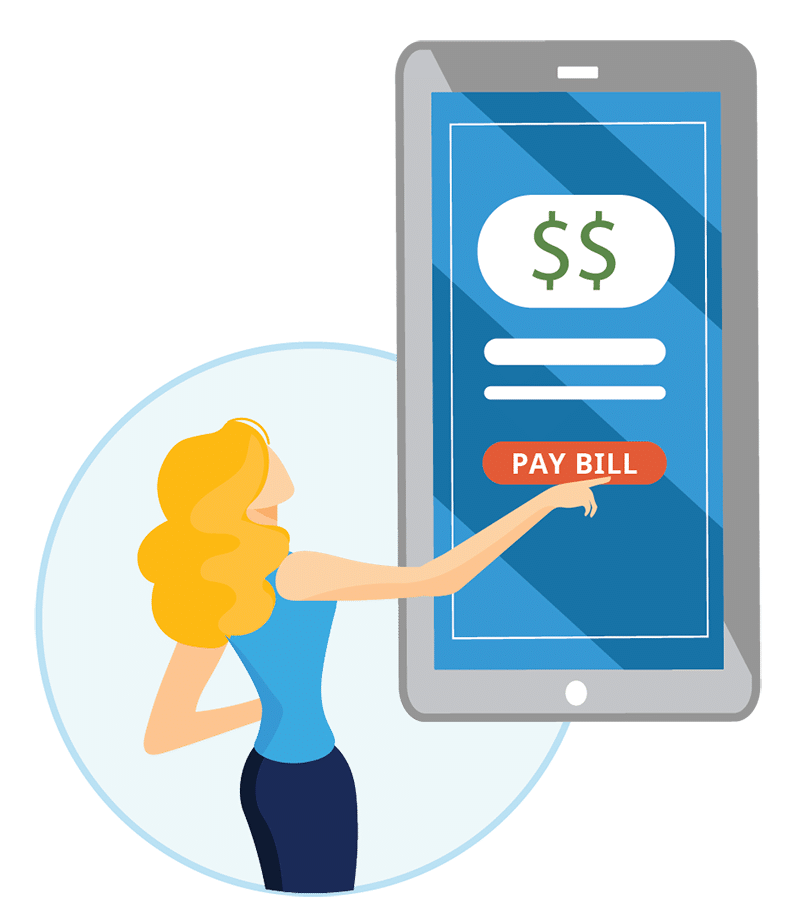
With Health iPASS integrated through TrustCommerce, collect more patient dollars while improving patient engagement from pre-arrival to final payment.
By simplifying the check-in, intake, and patient payment processes, Health iPASS, a beautifully designed and user-friendly mobile patient engagement platform, lets patients know what they owe and can make payments with ease via a multi-channel software interface.
Health iPASS is committed to delivering better check-ins for patients and better revenue for medical practices through a game changing digital patient engagement platform.
Health iPASS Payment Features
Solutions for every stage of the patient journey!
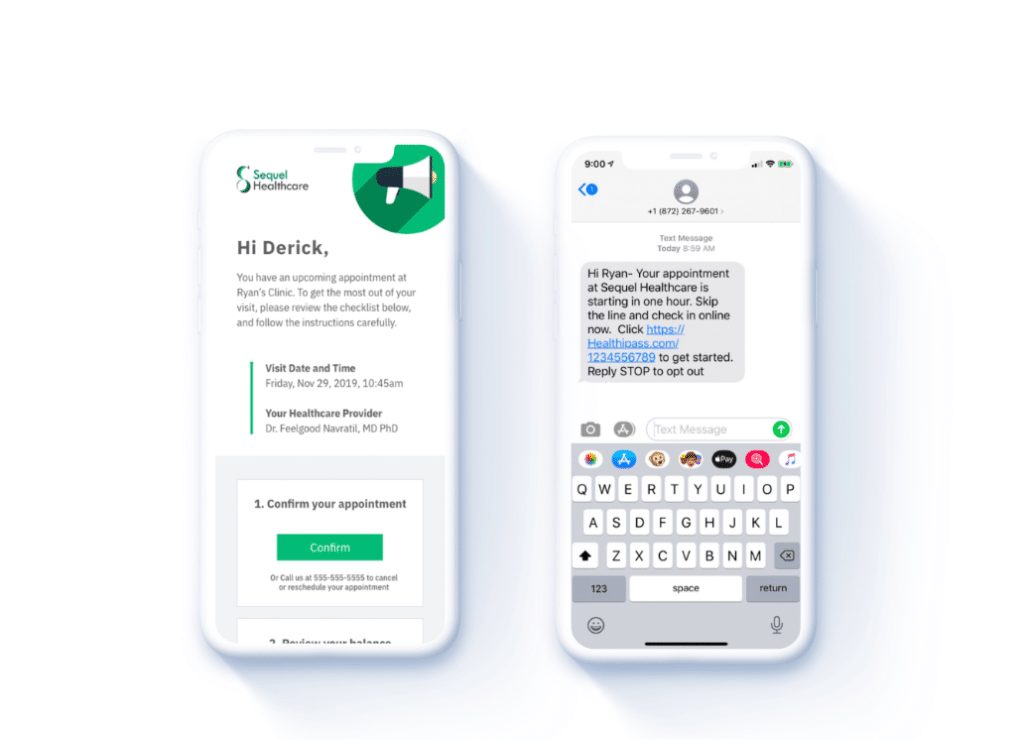
PRE-ARRIVAL
- Touch-free, 100% mobile check-in and intake
- Customizable digital forms
- Interactive appointment reminders
- AI-driven insurance verification
- Cost estimator tools
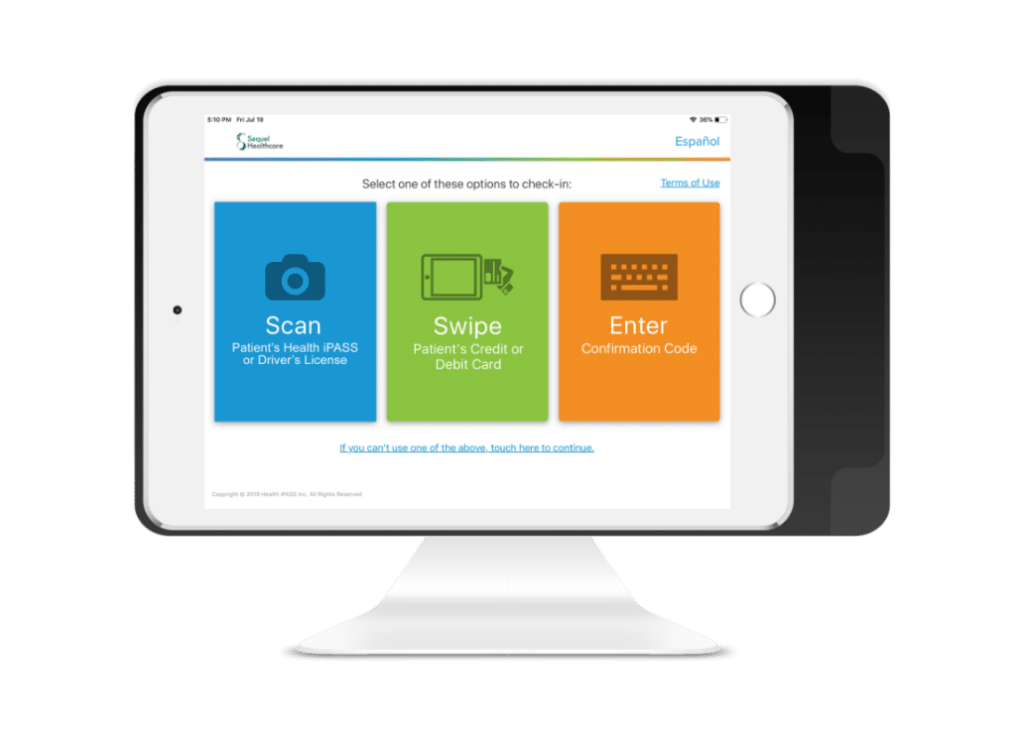
POINT-OF-SERVICE
- 60-second self-serve or assisted check-in
- Clear review of benefits
- Clear, consistent, and easy collection of payments
- Ability to secure a card-on-file for automatic payment of residual balances
- Automatic posting of patient payments and demographic updates
- In-clinic digital forms management
- Digital receipts
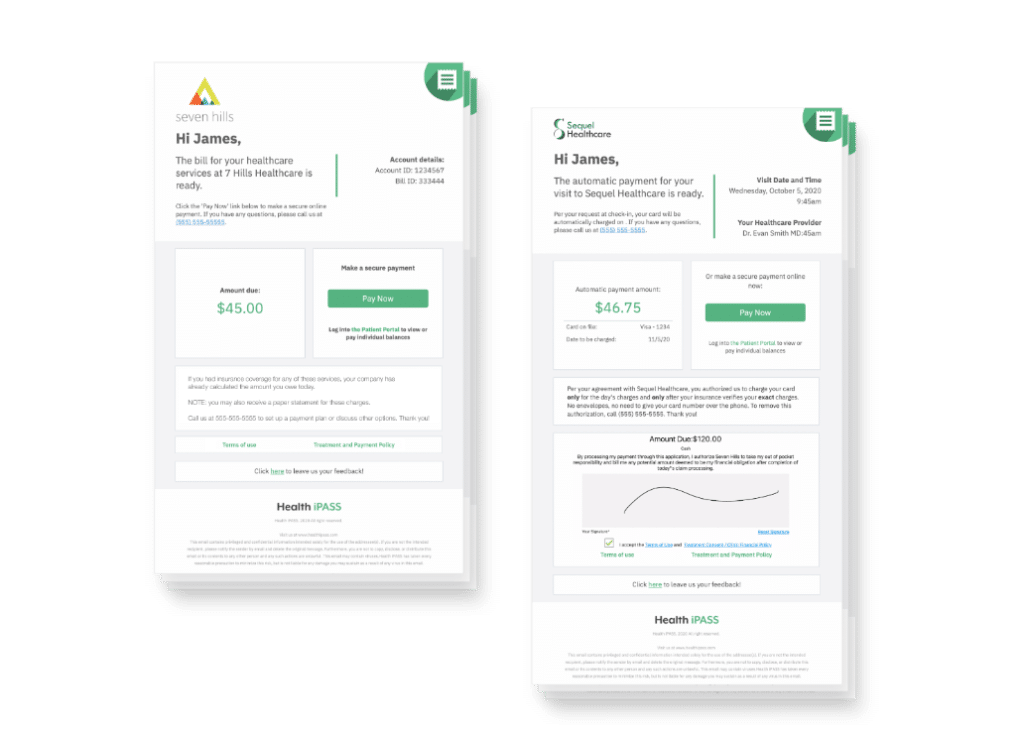
Post-visit
- Automated electronic billing & billing reminders
- Auto-debiting of residual patient balances
- Automated billing reminders
- One-time payments & payment plans
- Online bill pay portal
- Flexible payment plans
- Post-visit surveys
Contact TrustCommerce for more information
Explore All The Health iPASS Platform Has To Offer
